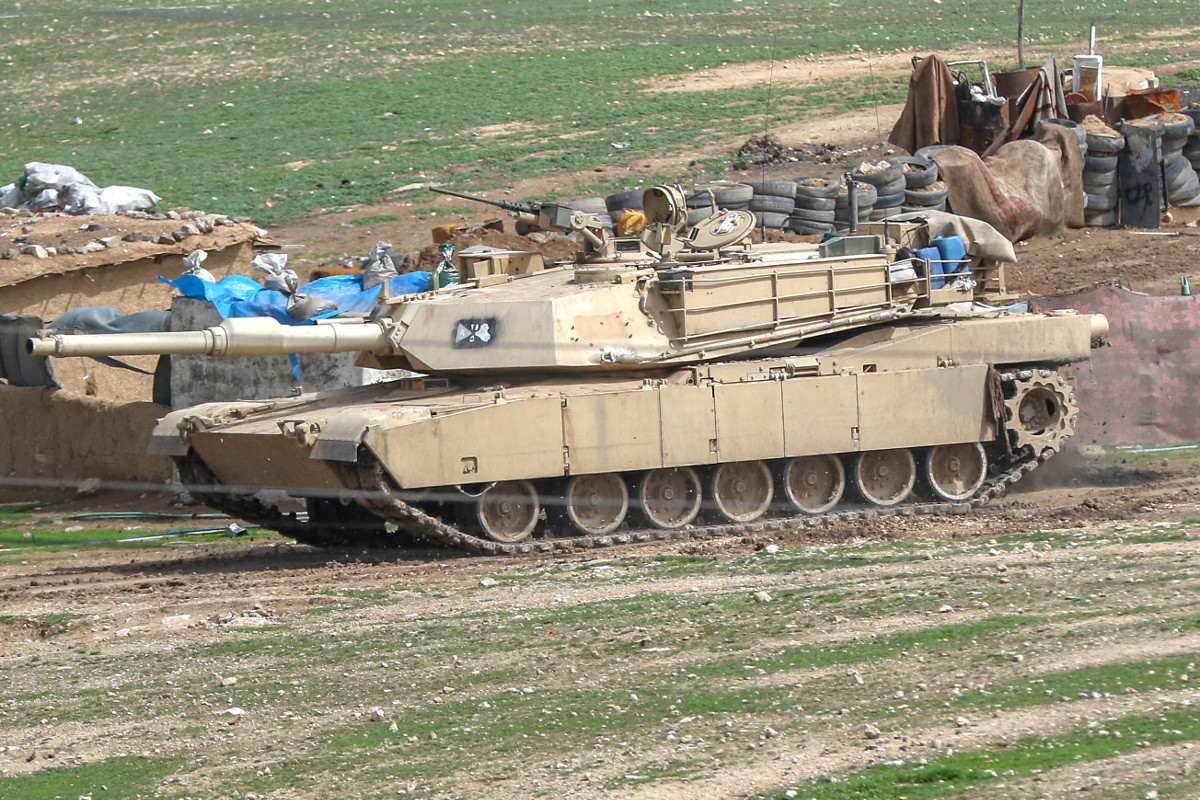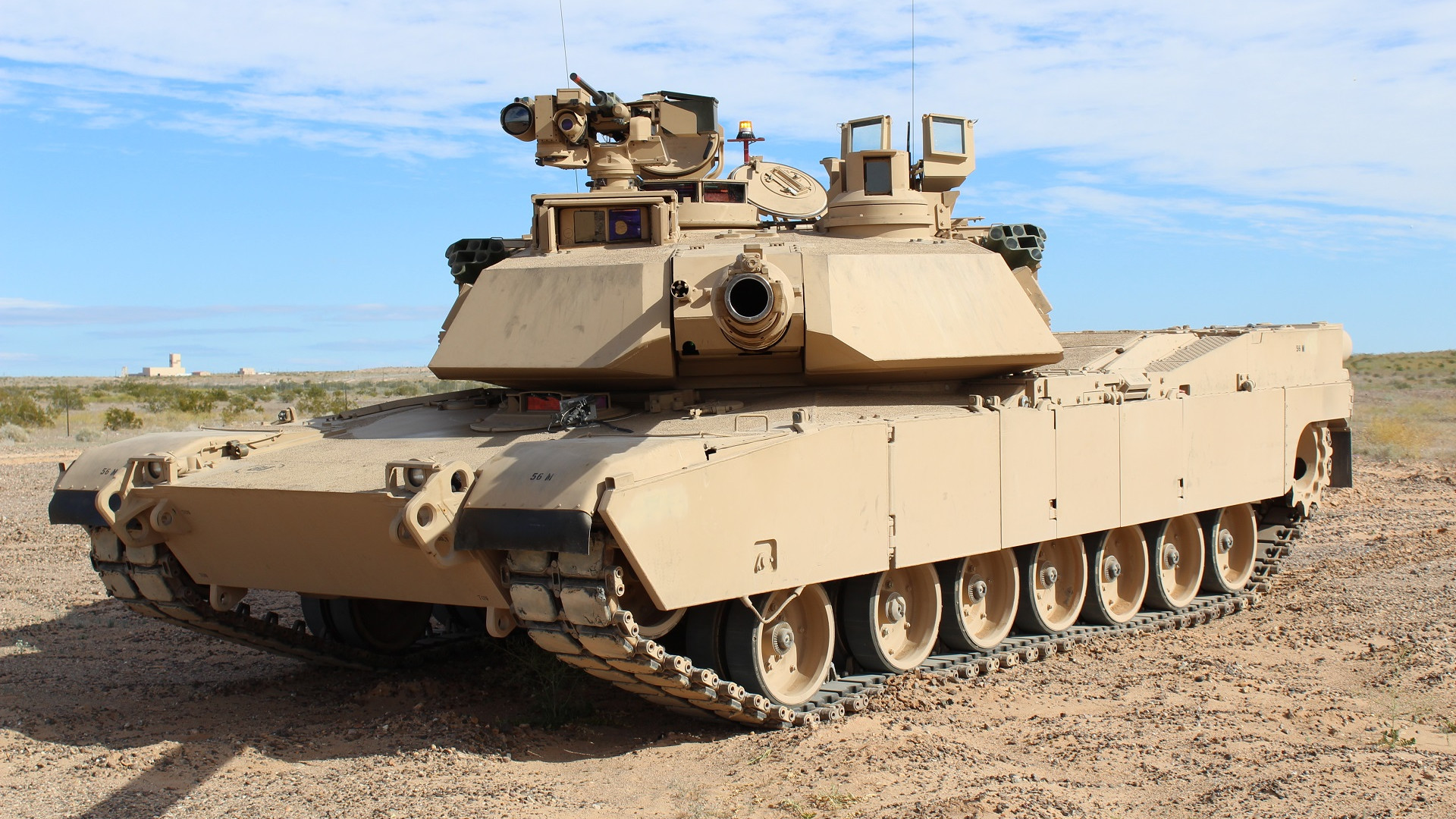A senior U.S. defense official said today that there is a definite possibility that the U.S. government could transfer unspecified tanks to the Ukrainian armed forces in the future.
The remarks from the senior U.S. defense official about tanks for Ukraine were included in a routine Pentagon press briefing about the state of Russia’s war on that country earlier today. Ukrainian forces continue to push ahead with a major counter-offensive that began some four weeks ago and has already led to the liberation of a substantial amount of previously occupied territory. Foreign military aid packages full of weapons, ammunition, and other materiel – especially U.S.-supplied High-Mobility Artillery Rocket Systems (HIMARS) firing 227mm Guided Multiple Launch Rocket System (GMRLS) rockets and air-launched AGM-88 High-speed Anti-Radiation Missiles (HARM) – have been key to these successes, and continued deliveries are likely to be essential for keeping up the momentum.
“Tanks are absolutely on the table,” the senior U.S. defense official said, according to VOA’s Carla Babb. The senior U.S. defense official did say that Ukrainian forces would need to demonstrate their ability to maintain more modern Western tanks before American authorities would agree to provide them, according to Foreign Policy‘s Jack Detsch.
The requirement that Ukrainian forces first prove themselves capable of keeping a fleet of Western tanks going seems unlikely to be a major dealbreaker. U.S officials said similar things in the past ahead of the initial deliveries of HIMARS. Ukraine’s military has shown itself very capable of getting contingents rapidly trained to maintain and employ HIMARS and other more complex Western weapon systems, such as the aforementioned AGM-88s and ground-launched Harpoon anti-ship missiles.
Regardless, it’s unclear what tanks the U.S. government might be prepared to transfer. The senior defense official’s comments have already prompted speculation about the potential of U.S.-made M1 Abrams tanks hitting the battlefield in Ukraine.
There are certainly a number of M1 configurations that are readily exportable, but that would still provide Ukrainian forces with newer and significantly more capable tanks than most, if not all of the Soviet-era designs and derivatives that they currently operate. It is possible that older Abrams in U.S. military inventory could be sufficiently downgraded, with any sensitive fire control, communications, and other systems removed, to allow them to be ‘drawdown’ and more quickly sent to Ukraine.

A ‘drawdown’ in this case refers to an authority that the President of the United States has, if certain stipulations are met, to transfer various kinds of materiel straight out of American stocks to allies and partners, something you can read more about here. The U.S. government has already sent billions in military assistance to the Ukrainian armed forces through the drawdown process, as well as other aid purchased directly on its behalf.
In terms of available tanks, the U.S. Marine Corps notably decided a few years ago to divest its entire fleet of M1s, as well as M88 armored recovery vehicles and M60 tank-based Armored Vehicle Launched Bridges (AVLB). The process has seen these vehicles transferred to the Army, though what that service’s exact plans might be for them has been unclear. The Army already has thousands of older M1s in storage, too.

At the same time, M1s could present unique maintenance and logistical challenges for the Ukrainian armed forces, in no small part because of their fuel-hungry and complex gas turbine engine powerplants. The vast majority of Western, as well as Soviet-era tanks, use more conventional diesel engines. Initial versions of the Soviet T-80 series, which were produced in Ukraine, were also gas turbine powered. However, later variants and derivatives of the T-80, including Ukraine’s modernized T-84 Oplot, nixed the turbines in favor of simpler and cheaper to maintain diesel engines.

Transferring wheeled 8×8 M1128 Stryker Mobile Gun System (MGS), which are armed with 105mm guns, but are not tanks, could be another potential option for the U.S. military to help bolster Ukraine’s armored vehicle fleets. The U.S. Army announced its plans to divest all of its M1128s last year, meaning that they’d be readily available to send to the Ukrainian Armed Forces.
These vehicles could be particularly well suited for Ukraine under the circumstances, being simpler and cheaper to operate and maintain than an Abrams, if also less capable. In addition, with the Army’s retirement of the M1128s, there are no other 105mm gun-armed vehicles currently in U.S. military service, making it just that much less of an issue to transfer relevant ammunition. It is, of course, worth noting that the Army’s future Mobile Protected Firepower (MPF) light tanks will be armed with 105mm main guns.

Sending the M1128s to Ukraine could be made part of a larger push by the U.S. government to facilitate or otherwise promote the transfer of older tanks with NATO-standard 105mm guns to Ukraine. For instance, there may still be some number of U.S.-made M60A3 Patton tanks, which either are or can be significantly upgraded with modern sensors and other capabilities, in storage in a number of NATO countries that American authorities could seek to help deliver to the Ukrainian military.
The possibility of Germany sending older Leopard 1 tanks to Ukraine, or approving the delivery of Leopard 1s from third parties, has been a topic of discussion for months now, as well. For now, however, German authorities continue to block any transfers of Leopard 1s, among other German-made armored vehicles, to Ukraine.
At the press briefing earlier today, the senior U.S. defense official did specifically highlight how American authorities have already “spent a good deal of effort in encouraging countries largely in Europe who have some of these formerly Russian-made tanks to provide them to Ukraine to supplement Ukraine’s existing tank inventory.”
With all this in mind, it is very interesting to note that Slovenia, which is a NATO member, announced today that it plans to transfer 28 M-55S tanks to Ukraine as part of a three-way deal that will see it receive 40 unspecified vehicles from Germany in exchange. The M-55Ss, also sometimes referred to as M-55S1s, are highly modified versions of the Soviet T-55 that received an upgrade package developed by Slovenian firm STO RAVNE in partnership with Israeli defense contractor Elbit in the 1990s. The M-55s are armed with NATO-standard 105mm guns in place of the original 100mm D-10Ts, and have modernized fire control systems and optics, among other improvements, as well as the ability to be equipped with ERA. If this deal goes ahead, Ukraine will have to start receiving NATO-standard 105mm tank ammunition, as well.

No matter what, heavy armor, in general, continues to be very actively employed on both sides of the current conflict in Ukraine, despite equally active discussions about whether the fighting has proven that tanks are increasingly unsuited to modern battlefields. Even older armored vehicles have proven useful in a conflict where the opposing side has also been making use of dated types, at least in part due to attrition.
As such, it’s hardly surprising that tanks and other armored vehicles continue have been and continue to be high on the Ukrainian government’s military aid wishlists. Replenishing armored vehicles lost in the fighting so far, and potentially upgrading Ukraine’s ground combat capabilities in the process, is perhaps even more important now in light of the ongoing counter-offensive.
All told, it still very much remains to be seen when any American tanks might actually make their way to Ukraine, and what types might be transferred. At the same time, even older Western tanks could still be a major boon to the Ukrainian military’s ongoing fight to push back the Russian invaders.
Contact the author: joe@thedrive.com
